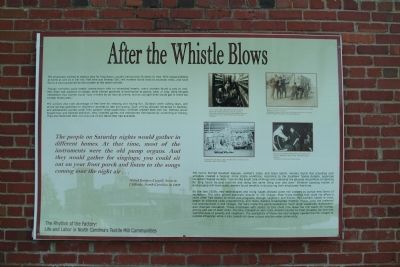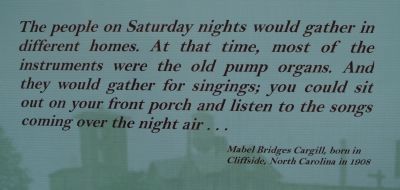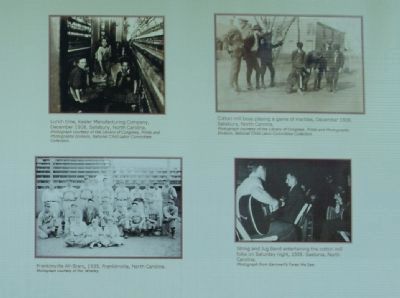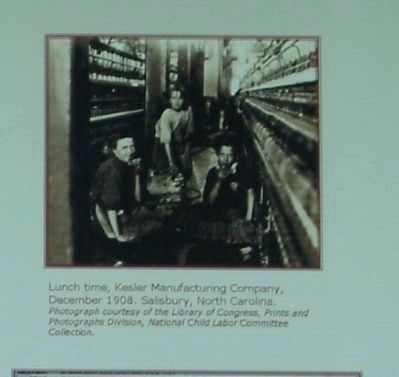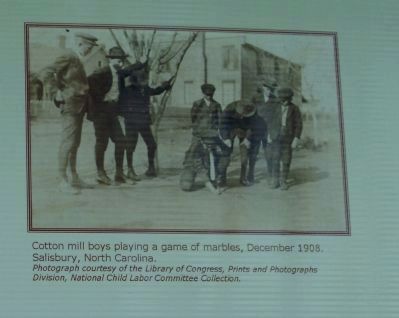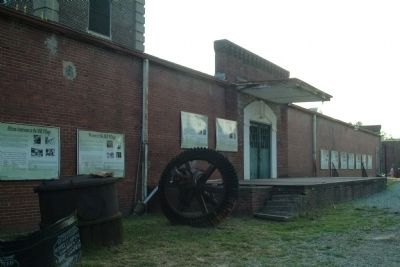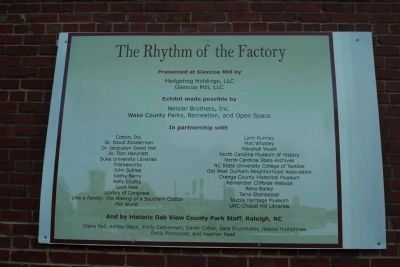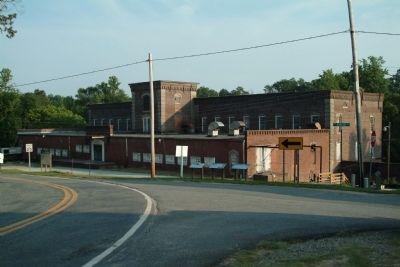Glencoe Village near Burlington in Alamance County, North Carolina — The American South (South Atlantic)
After the Whistle Blows
Though workdays could stretch twelve hours with no scheduled breaks, many workers found a way to rest. Men often met outdoors to smoke, while women gathered in washrooms to gossip, joke, or sing. Edna Hargett remembers how women would “stay in there for an hour at a time, and us younger ones would get in there too to hear those jokes.”
Mill workers also took advantage of free time for relaxing and having fun. Sundays were visiting days, and entire families gathered on neighbors’ porches to talk and gossip. Such visiting allowed romances to develop, and adolescents courted under their parents’ close supervision. Children created their own fun. Without store-bought toys and planned activities, they invented games and entertained themselves by swimming or fishing. They also fashioned their own toys out of any items they had available.
The people on Saturday nights would gather in different homes. At that time, most of the instruments were the old pump organs. And they would gather for singings; you could sit out on your front porch and listen to the songs coming over the night air…
Mabel Bridges Cargill, born in Cliffside, North Carolina in 1908.
Mill towns formed baseball leagues, women’s clubs, and brass bands. Owners found that providing such activities created a happier, more stable workforce. According to the Southern Textile Bulletin, organized recreation helped workers “look on the bright side of things and withstand the physical discomforts of standing for long hours by one machine and doing the same thing over and over.” Whether boosting morale or encouraging mill-town pride, owners found benefits in structuring their employees’ free time.
By the late 1920s, new technologies and rising wages allowed some mill workers to pursue new forms of recreation. The radio proved especially popular in mill villages. Even those families that could not afford a radio often had access to music and programs through neighbors and friends. Mill workers’ tastes in music began to influence radio programming, and many stations broadcasted “hillbilly” music. Long the preferred live entertainment in mill villages, the radio made this genre available to much larger audiences. Automobiles also changed recreation. Those employees with access to cars could now leave the mill towns for Sunday picnics and out-of-town visits. Courting changed as well. Cars allowed couples to meet privately, far from the watchful eyes of parents and neighbors. The availability of these new technologies opened the mill villages to outside influences while it also spread mill-town culture into the wider community.
Topics. This historical marker is listed in these topic lists: Entertainment • Industry & Commerce. A significant historical year for this entry is 1908.
Location. 36° 8.337′ N, 79° 25.68′ W. Marker is near Burlington, North Carolina, in Alamance County. It is in Glencoe Village. Marker is on Glencoe Street, on the left when traveling west. Glencoe Village is 3 miles north of Burlington, NC from NC Highway 62. Touch for map. Marker is at or near this postal address: 2406 Glencoe St, Burlington NC 27217, United States of America. Touch for directions.
Other nearby markers. At least 8 other markers are within walking distance of this marker. The Mill Buildings (here, next to this marker); Picker House and Dye House (here, next to this marker); Men in the Mill Village (here, next to this marker); African Americans in the Mill Village (here, next to this marker); Women in the Mill Village (a few steps from this marker); Neighbors Divided (a few steps from this marker); Calling the Mill Village 'Home' (a few steps from this marker); Children in the Mill Village (a few steps from this marker). Touch for a list and map of all markers in Burlington.
Related markers. Click here for a list of markers that are related to this marker. To better understand the relationship, study each marker in the order shown.
Additional keywords. Alamance Cotton Mill, Glencoe, Fabric, Textiles, Company Shops, Holt
Credits. This page was last revised on May 11, 2023. It was originally submitted on July 13, 2010, by Patrick G. Jordan of Graham, North Carolina. This page has been viewed 924 times since then and 12 times this year. Last updated on May 9, 2023, by Michael Buckner of Durham, North Carolina. Photos: 1, 2, 3, 4, 5, 6, 7, 8. submitted on July 13, 2010, by Patrick G. Jordan of Graham, North Carolina. • J. Makali Bruton was the editor who published this page.
